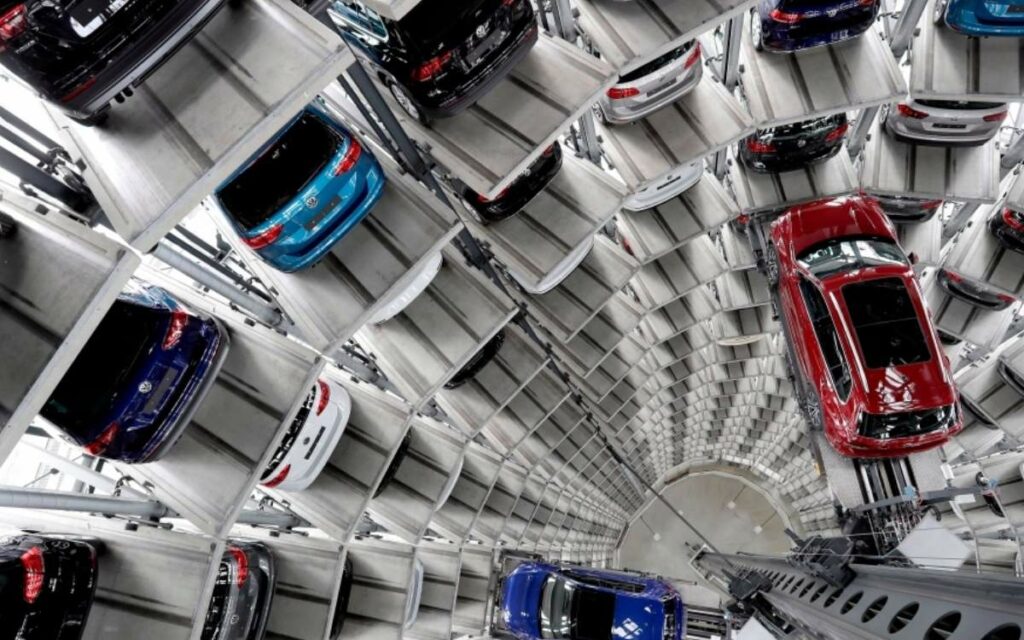
On Monday, the provincial and federal governments announced that Volkswagen picked southwestern Ontario to build its first electric vehicle battery plant in North America. The announcement was met with much fanfare. But is all this money being thrown at EVs a good use of our tax dollars and the focus from governments, or just the latest trendy environmental bandwagon that may turn out to be a giant flop? Photo credit: AP/Michael Sohn
The big announcement in Ontario this week was the news that Volkswagen will build an electric vehicle (EV) battery facility in St. Thomas. The beginning of production is anticipated in 2027. Apparently, this will be the first large factory for battery cell manufacturing overseas for Volkswagen. Ontario government representatives were effusive, with Minister of Economic Development Vic Fedeli claiming that Ontario and Canada are rapidly becoming one of the leading jurisdictions in the EV battery supply chain.
There is no doubt that Ontario has been successful in attracting investments to the province over the last few years, citing $17 billion since 2020. All these investments have involved taxpayer dollars from both provincial and federal governments as an inducement to the businesses to locate here. Very often the extent of the taxpayer dollars involved are not very clear. In this most recent example with Volkswagen, Minister Fedeli commented that information on the actual dollars involved and the jobs to be created would be announced at some future date.
The question remains – is all this money being thrown at EVs a good use of our tax dollars and all the focus from governments, or just the latest trendy environmental bandwagon that may turn out to be a giant flop? There are many reasons to have questions. Transportation is responsible for about 25 per cent of all greenhouse gas emissions (GHGs) in Canada, so making progress in reducing emissions from this sector would surely have a positive impact on Canada’s emissions generally.
EVs have been around for a long time, yet it is only in recent years that the focus on climate change has elevated their profile as one possible solution to reduce emissions. The federal Liberal government recently stated that by 2026 they expect EVs will represent 20 per cent of new passenger vehicles sold, half by 2030 and by 2035 all new vehicles sold must be EVs. These “mandates” will likely follow the path of all of the climate goals that have been set in the past and come nowhere near being achieved.
Despite years of significant subsidies and promotion, EVs still only represent about two per cent of new vehicle sales, and those sales are concentrated in the urban areas of Toronto, Montreal and Vancouver. As more information becomes known about EVs, it has become clear that they are not exactly as “green” as advertised, as they produce a great amount of unrecyclable waste in our landfills as their heavy batteries are discarded.
More and more rare metals need to be mined to manufacture new batteries. These metals are called “rare” for a reason, and as such believing they will be plentiful enough to be a long-term solution doesn’t make sense. EVs are expensive to buy even with subsidies, and if a battery needs to be replaced the cost borders on the prohibitive.
As enough consumers gain experience with EVs, some of their other weaknesses become apparent. The batteries are prone to catching fire. In a cold climate like Canada’s, the distance able to be travelled on a charge is significantly diminished, and charging facilities outside of large urban areas are limited. Our current electrical grid is not equipped to handle increased demand from growth in EVs. As EVs are significantly heavier than regular internal combustion engine (ICE) vehicles, accidents with EVs tend to be more deadly. Despite all the hype around EVs at present, it may well turn out that they are not a practical solution to replace current ICE vehicles.
The history of the EV industry has been rife with tax subsidies, whether it be to manufacturers to establish facilities in Canada or significant inducements to consumers to buy electric vehicles. A number of municipal governments are also converting their buses and other transportation services to EVs, using taxpayer dollars to do so.
If EVs were such an attractive alternative, such large subsidies should not be required. Yet the Canadian automotive industry in general has long been dependent on subsidies more than most other manufacturing industries have been, so the EV phenomenon appears to be just the latest version of this government-dependent industry.
The auto industry represents about 10 per cent of the manufacturing sector in Ontario, but seems to get most of the political attention. The public dollars devoted to autos are out of proportion to the size of that sector, and work against the many other types of manufacturing that also deserve consideration for their many contributions to job creation and the tax base. While Ontario should indeed investigate opportunities in the EV sector, the inordinate current focus looks a lot like putting all of our eggs in one questionable basket.

She has published numerous articles in journals, magazines & other media on issues such as free trade, finance, entrepreneurship & women business owners. Ms. Swift is a past President of the Empire Club of Canada, a former Director of the CD Howe Institute, the Canadian Youth Business Foundation, SOS Children’s Villages, past President of the International Small Business Congress and current Director of the Fraser Institute. She was cited in 2003 & 2012 as one of the most powerful women in Canada by the Women’s Executive Network & is a recipient of the Queen’s Silver & Gold Jubilee medals.






